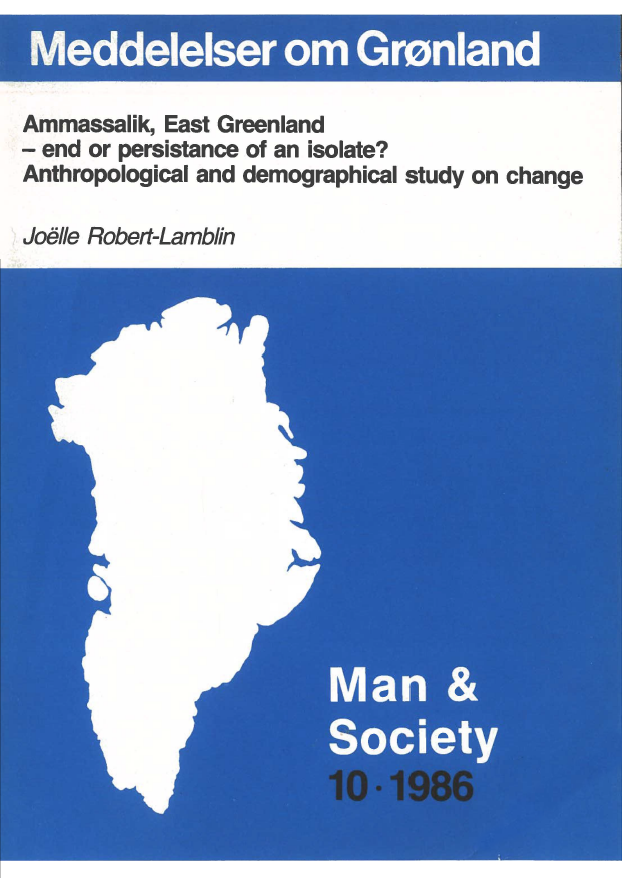Ammassalik, East Greenland - end or persistance of an isolate? Anthropological and demographical study on change
DOI:
https://doi.org/10.7146/mog-ms.v10.145717Abstract
This work retraces the various phases of the evolution of a small East Greenlandic society throughout the twentieth century and sums up its present-day transformations as a result of its contact with the western world.
Discovered barely a century ago, the Ammassalik Eskimo ethnic group was in a way a "perfect" model of an isolate - whether from a biological or a cultural point of view. It opened to the outside world, slowly before the Second World War, then consistently faster after the 1940's. This society of nomadic sea mammal hunters underwent a real demographic explosion, became sedentary, diversified its activities and lifestyles and is beginning to show some social stratification.
Demographic analysis, on a genealogical basis, has been at the heart of this research on change; it allows us to appreciate transformations in the biological heritage, as well as in family organization and social and economic structures. This approach draws attention to the existing interactions between the various phenomena which make up the life of a small society and determine its evolution.
In conclusion, the contemporary history of some 2300 Ammassalimmiut of Ammassalik district is placed in the wider context of Greenland's accession to Home Rule (in 1979) and of the unifying movement initiated between three of the territories where the Inuit live today: Alaska, Canada and Greenland.

Downloads
Published
Issue
Section
License
Coypyright by the authors and the Commision for Scientific Research in Greenland / Danish Polar Center/Museum Tusculanum Press as indicated in the individual volumes. No parts of the publications may be reproduced in any form without the written permission by the copyright owners.
